Orlando Toll Roads: Should You Avoid Them?
There are 10 Orlando toll roads, and one more coming soon with the I-4 Ultimate project. Paying for tolls may seem like something undesirable, but the truth is that they’re well worth the price. By using toll roads, you get a few benefits in exchange.
Why Avoid Toll Roads?
There are two basic reasons to avoid toll roads.
If you aren’t prepared to pay for tolls, it’s not a good option for you. The targetted cost to drive on toll roads is eleven cents per mile, though there are some exceptions. For example, the new Express toll lanes on Interstate 4 will eventually operate a variable toll pricing schedule based on the volume of traffic.
Also, there’s no point in using a toll road if it doesn’t go to the area you want to visit.
Toll roads are great for getting from one major area of Central Florida to another, but they’re not useful for community driving.
Some people just don’t like toll roads. Perhaps that’s because they don’t like the idea of paying for the privilege of driving. That’s a mistaken notion, though. One way or another, you’re going to pay.
The question is whether you’re going to pay with change or with traffic delays and frustration.
Why Should You Use Toll Roads?
You can exit the airport only from the North or the South, and it’s possible to head out without hitting any toll roads at all. In practice, it’s not a good idea. The toll roads avoid a lot of traffic and congestion, particularly during rush hour times.
Google Maps may show that non-toll routes are faster, but that’s not really true. Frequent stops and heavy congestion can turn a 20-minute trip from the airport to Walt Disney World into an hour and a half of frustration.
That’s not even getting into the occasional bullets that fly on Interstate 4.
Also, the non-toll routes are often less direct. You end up traveling a longer distance through local traffic. If you’re not familiar with local roads, it can be highly frustrating.
Take a good look at Orlando from above and you’ll see hundreds of lakes and ponds. The roads have to weave around these natural elements, which adds to the confusion for visiting drivers. Toll roads make it much easier to navigate from place to place.
Given a choice between taking the city routes vs. the toll roads, I’ll always go for the toll roads. Even if it’s longer, more expensive, and takes more time.
Why?
Because toll roads are far less stressful than the alternatives. You don’t have to deal with stop lights, navigating different streets, and crazed local drivers who are familiar with the roads and can’t stand the fact that you’re going too slow.
Navigating unfamiliar roads, even with a GPS, can still be stressful. There’s a road in Tampa that my GPS doesn’t really seem to understand. It routes me a mile away between an office building and the hotel I use. They’re right across the street from each other.
The toll roads are simple to navigate, have less traffic, and have no delays. You can avoid the toll roads if you want, but I’d encourage you to use them.
What is the Central Florida Expressway Authority?
The Central Florida Expressway Authority (also known as CFX) is a government entity responsible for the construction and maintenance of highways in central Florida.
It started in 1963 when the Florida Legislature created the Bee Line Expressway (Hwy 528) between Orlando and Titusville along the Space Coast. The name changed to the Martin Andersen Beachline Expressway by the 2005 Florida Legislature
A board of directors appointed by the governor oversees CFX. The authority obtains funds through tolls and state and federal grants, and its primary mission is to improve safety and relieve congestion on central Florida’s highways.
In addition to its construction and maintenance activities, the Central Florida Expressway Authority also manages a number of other programs, such as the E-PASS electronic toll collection system and the Sunshine Parkway cashless toll system.
CFX isn’t the only agency responsible for Florida toll roads. Other toll roads in the area are operated by Florida’s Turnpike Enterprise. The Osceola County Expressway Authority, which created the Poinciana Parkway, merged its projects into CFX and no longer exists.
Orlando Toll Roads to Use
For travelers, the major toll roads to use are:
These roads lead to & from the major airports and also to Port Canaveral, in case you’re going on a cruise from the Orlando area.
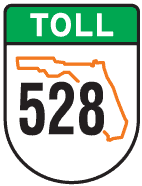
State Road 528
528 is the toll road that runs by Orlando International Airport (MCO) and runs over to Brevard County ending at Cape Canaveral. It was originally known as The Bee Line, as it’s a very straight road between Orange and Brevard County. It’s now called the Martin Andersen Beachline Expressway.
From the airport, 528 is the direct route to the tourist area along International Drive. It ends at Interstate 4, which then runs west to Walt Disney World or East toward downtown Orlando and ends in Daytona.
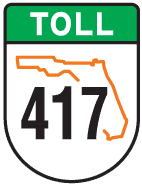
State Road 417
417, also known as the Central Florida Greeneway, is the Eastern beltway around Orlando. It starts connecting to Interstate 4 in Sanford. From there, it moves along the eastern perimeter of Seminole and Orange County until it connects with Interstate 4 again by Walt Disney World.
The most expensive toll is on the Lake Jesup bridge, which is about $2.00. Lake Jesup is one of the largest lakes in Central Florida and has approximately 9500 alligators, according to the Florida Fish & Wildlife Commission. Sometimes you can spot them in the water as you cross the bridge.
If you’re traveling to or from the Sanford-Orlando Airport, use this road to travel all the way to Walt Disney World. The road also intersects with Highway 408, which leads to Downtown Orlando and beyond. 417 also intersects with Highway 528, giving options to head to either Brevard County or toward International Drive in Orlando.
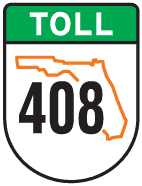
State Road 408
408 runs East/West through the center of Orlando in Orange County. One end begins in East Orange County, intersecting with Highway 417. From there, it runs West through Downtown Orlando and terminates in Gotha, intersecting with the Florida Turnpike (another toll road)
Highway 408 has very high traffic, considering it’s a major commuting route in and out of Downtown Orlando.
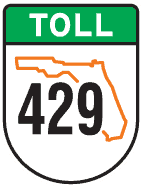
State Road 429
429 is the Western beltway around the Orlando area. It doesn’t connect with other major roads at its Northern starting point. Instead, the northern terminator connects to State Road 46 Near Mt. Plymouth and the Rock Springs Run State Preserve.
Highway 429 runs mostly south and passes the Eastern edge of Lake Apopka. It eventually terminates on its Southern end with Interstate 4 in Reunion, FL a bit further south than the Southern end of Highway 417.
There are three spur toll roads connecting to Highway 429, mentioned below.
Tolled Spur Roads
The roads listed below are spur roads that extend from some of the major toll roads listed above. These spurs are generally to alleviate some local traffic issues or make driving more convenient for travelers in a given area.
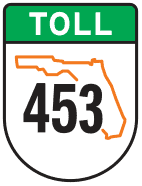
State Road 453
SR 453 is a spur of SR 429 on the Western Beltway. It’s a 1.6-mile span that connects the Wekiva Parkway with SR 46 near Mount Dora, FL. It’s known as the Mount Dora Connector and provides convenient access to save people coming from Mount Dora a bit of time to access SR 429, as the SR 46 termination is a few miles long to reach.
This road is essentially a tolled shortcut for folks going to and from Mount Dora and other areas in Lake County.
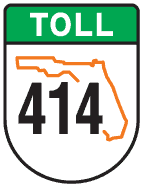
State Road 414
SR 414 connects from SR 429 to SR 441 in Orlando. SR 441, also known as the Orange Blossom Trail, is not a toll road. It
SR 414 runs East/West across the Apopka area and runs for 9 miles. The western spur from SR 429 departs near Lake Apopka and ends just north of Lockhart, FL.
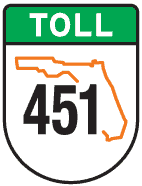
State Road 451
SR 451 is a 1.9-mile toll road running North/South in the Apopka area. The Southern terminator is from SR 414 and it runs North to terminate with SR 441, known as the West Orange Blossom Trail.
SR 451 is a busy commuter road connecting Seminole County with Eastern Orange County.
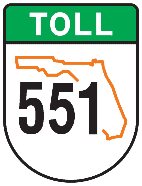
State Road 551
SR 551 is another tolled spur road coming off SR 528 near the Orlando International Airport. It travels north for 2.7 miles and terminates with Hoffner Avenue.
This route is an extension of Goldenrod Road, which isn’t tolled. Once all of the investment in this road earns enough toll revenue, the toll plaza will come down and maintenance will transfer to the City of Orlando.
How Do I Pay on a Toll Road?
The two major toll transponder systems in the Orlando area are E-Pass and SunPass. You can also use some other transponder systems from different areas as a courtesy exchange between different toll authorities.
Additionally, there are still some toll plazas that accept cash pay, but the preferred method of payment is to use all-electronic tolling to keep traffic moving.
1: Paying with E-Pass
Drivers who pay with E-Pass get a 23% discount on tolls. You can also use E-Pass on toll roads on all toll roads in Florida, Georgia, and North Carolina.
Click here to learn more about E-Pass toll payment.
2: Toll by Plate
Running through a toll without a transponder used to be an expensive proposition. There are cameras on toll road plazas that capture your license plate. In older times, that would cause a citation sent to your registered address, an expensive fine, and possibly points on your driver’s license.
These days, the same system now bills you automatically every 30 days using a system called toll by plate.
It still works as the method described above, but with a twist. Any tolls captured using toll by plate cost DOUBLE the electronic rate. Instead of a citation and fine, you get a bill sent to the vehicle’s owner and you have 30 days to pay.
Failure to pay initiates the old system where the registered owner of the vehicle gets cited and charged a fine. You can get apps for iPhone and Android to pay your fine, but you’re also able to pay by credit card online, call the service center to pay, or pay in cash at a service center.
3: Pay Through Your Rental Car Company
Most rental car companies allow you to use the toll roads with a license plate option, but that service comes with fees from the rental agency. If the fee is over $10, it’s better to get a transponder from ePass or SunPass.
You can buy a SunPass transponder for about $10 from a local grocery and convenience store. You don’t have to stop for tolls and you get charged a lower rate when you use a transponder.
4: Pay with Cash at a Toll Plaza
Despite the automated systems that allow you to drive through, there are still manned and unmanned toll options.
At each major plaza on a toll road, there is an option to take a detour to a toll plaza on the right side of the road. You can pay in coin or cash there, depending upon the amount of the toll. Be aware that some of these lanes are unmanned and require exact change. If you use cash pay at a manned lane, you can get change back.
The downside is that this method takes longer, particularly if you’re caught behind several other cars also in line to pay by cash. Also, note that the cashiers are not permitted to accept bills larger than $50.
Depending upon their direction and distance from a toll plaza, you may have to pay a toll at some exits or entry points. The electronic transponders work here, but there’s also a bucket to toss in your change to pay for the toll. You must pay with exact change. Bills are not accepted.
5: Pay with SunPass
Where E-Pass is the preferred payment for the Central Florida Expressway Authority, SunPass is the electronic toll payment system for the State of Florida. Not only is it accepted throughout the state, but it’s also accepted in more states than the E-Pass transponder.
E-Pass discounts also apply to users of SunPass transponders, so its combination of discounts and courtesy use in other states makes SunPass the best option for regular travelers of Orlando toll roads.
Click here to find out more about SunPass toll payments.
Transcript
Welcome to the Orlando Local Show, episode number twenty-nine.
Hey, thank you very much for joining us on the Orlando Local Show. My name is William Beem and it’s just going to be you and me today. Lee is off taking care of some other things.
Our show today is going to be on how to avoid Orlando toll roads, but also there are some reasons why you may not want to. And this question kind of came to us over Twitter from someone named Jason Rob Gallant. I hope I pronounced your last name correctly.
Jason asks: “Have you ever done a show on dealing with or avoiding tolls for travelers? We are arriving at MCO, renting a car. We’ll be staying at Loughman” (It’s down in the Poinciana area.
It’s actually kind of a popular place for people who are going to visit Walt Disney World and it’s kind of like in the Champions Gate area, Poinciana and Winter Haven area. So it’s a bit south of going to Walt Disney World and if you plan on going to Legoland it’s probably a good jumping off point for that.
Like I said, it’s a popular area, especially if you want to rent a villa or something like that rather than stay in a hotel. The question kind of is how do I get there without paying tolls?
We’ll get to that a little bit later on, but let’s go over the topic itself.
Orlando has a number of toll roads and usually if you go to an airport in most major cities they kind of surround the place with toll roads. There is a way to get in and out of the Orlando Airport (the code for that is MCO, if you’re not familiar already) and you can just kind of look and see that you can really only get out to the North or to the South. If you want to travel without going toll roads, it’s possible. You’ll be driving some back roads. You’re going to be making a lot of turns and of course you’re going to ahve to deal with traffic and stop lights.
It’s not the way that I would really recommend to anybody because yes, you are avoiding the tolls, but you’re dealing with a lot more stress because the people who are driving on those roads in town know – or hopefully – they know where they’re going and some of them can be a bit more aggressive; sometimes it’s not so bad. It depends upon the time of day and where you’re at.
But it’s not an area I would recommend. Despite the fact that traveling on local roads rather than the toll roads is probably going to be fewer miles and can possibly even be faster if you know where you’re going.
Let me just ask the question. Why do you want to avoid local toll highways? There are really two reasons.
One is you don’t want to pay the money for the tolls. That’s pretty obvious. The other one is you don’t want to stop at every little toll plaza that comes along because that kind of adds up to your time driving. So the toll roads are going to go out a little bit more, you’re going to be driving more miles and then if you have to stop at every toll plaza and fish out quarters, which you may not have or you’ve got to deal with change, it just gets to be a pain in the neck. I understand that.
There are a couple of highways around here that you’re probably going to be predominantly dealing with if you’re looking at the visitor areas and toll roads.
The two coming out of the airport are going to be 528, which is also known as the Beachline and that will head over to the East, it will head over to the Cocoa area and to the West it will kind of take you into the International Drive area.
The other one is Florida State Road 417. It’s kind of a beltway highway. It goes from down at the Disney area, just below Walt Disney World area and you will get on 417 there past Celebration and go out and around to the East and then back up to the North to Sanford.
If you want to avoid driving I-4 through the major dense area, which trust me, I do – I would rather go 417 even though it’s longer and it costs me money – it is a much less stressful way than driving either on I-4 through Downtown Orlando, Altamonte Springs and other places to get up North, or going South the other way. It’s also less stressful than taking the back roads because the back roads, especially at high volume times like rush hour in the morning, rush hour in the evening or lunchtime, the roads around here are just getting clogged. The reason for taking 417 or taking 528 really is to thin out the herd so that you can drive to your destination without having a whole lot of traffic.
Even 417 in some areas is getting kind of crowded in the morning. I know if you’re coming down from Sanford, going across Lake Jessup just before you get to the University Road exit for traffic going to UCF (University of Central Florida) or also going down to major work areas like Lockheed Martin, there’s a lot of traffic that kind of clumps up in that area. Then you get past it and start driving fine again. It happens in both directions at the rush hour time.
The other major roads that you might come up with are 429 – that is the other part of the beltway and unlike 417 going around the East, 429 is going off up to the West, but it’s not yet connecting back to I-4 and I’m not sure if it’s going to. That would kind of connect to the Mount Dora area. So if you’ve got a reason to drive up in that area, 429 is a good toll road to take, but it doesn’t come back to connect with I-4 if you’re heading from Disney area on towards I-4 direction.
Now, as far as the toll systems, there are several in Florida, but there are two predominant ones in the Orlando area. One is SunPass and the other is the Central Florida Expressway Authority, also known as ePass. And you’ll see signs for both of these along the highways I’m talking about: 528 and 417 toll roads.
The good news is each one of them recognizes the other so you don’t have to worry about do I have to buy a SunPass for this and an ePass for that? The answer is no you don’t. Really if you’ve got a SunPass or ePass you can drive on either of these roads and you go through all the tolls. In fact on 417 you will find some areas where SunPass is the major provider for tolls and ePass is the major provider in other areas. If you are going to like the center of a city, East or West Expressway is Florida State Road 408. That is pretty much an ePass system.
While 417 is pretty much a SunPass system with some sections for ePasses. It kind of gets confusing but the truth is you don’t have to pay that much attention to it.
OK so I mentioned the fact that you may not want to avoid the tolls and there are a couple of reasons for that. One, if you have a rental car you can still use the toll system without having to stop and give change at each plaza and that’s because a lot of rental car companies will provide you with a license plate tracking system so you can just drive straight on through without having to stop and take a pass.
There is a bit of a down side to it. Depending on your rental car company they are going to charge you for it and what they charge may or may not be worth your while.
What you can do instead is you can order a transponder from either SunPass or ePass and I’ll put links to these on the show notes and for about ten bucks you get a transponder and then you can drive straight through. But you get another advantage. The tolls are cheaper. You get discounts for using the transponder system versus going through either the license plate collection system or going through and paying the tolls.
So in my case I really prefer the toll roads, even though they are longer; even though there is an additional charge. Because it is much less stressful and it is much less hassle than driving on back roads going through stop lights, making a bunch of turns and planning your route that way.
Now how are you going to map your route? There are a couple of things you can do. If you’ve got a vehicle that has a GPS system in it you can program that and it will guide you to your destination. I’ve done this in a few strange cities and at times … most of the time it works great. At times when it frustrates you is when you have a quick turn this way, a quick turn that way and you’ve got to go through something that you’re just not expecting to come up so soon. You may over shoot a turn and then have to come back around and go back in. It’s happened to me specifically in Boston because there are so many places in Boston where the roads just seem to be like cow paths and they were built on the cow paths!
But in Orlando it’s not quite that bad; every once in a while you’ll have a quick left and then a quick right or something that may mess you up.
I know leaving the airport going out on the road and then trying to onto McCoy Road there are a couple of spots there where it just seems if you don’t know the area and if you’re not paying attention to it you may end up having to circle around and go back.
And that, along with the traffic lights, is one of the reasons why I really don’t like taking the back roads and it’s not something that I would recommend. I would really recommend using the toll road system and even I-4 South of the Downtown Orlando area. I think it’s going to be much better than trying to take some of the back roads to get to your destination.
Now if you don’t have a mapping system in your car what I’m going to recommend is that you go to Google Maps. This is actually pretty simple to do. You’re going to search for the airport code, MCO. After you get the results from typing in MCO on the left side you’re going to see a blue bar, on the upper left side that says Orlando International Airport and to the right side of that little box it says directions.
Go ahead and click on Directions. You need to say instead of putting Orlando International Airport in the bottom section you kind of want to hit the arrows pointing up and down to the right hand side of that and just make sure that Orlando International Airport is at the top. In other words that’s the part where you’re going to be departing from.
And then put in the address or location of where you’re going to.
So if you know the street address, that’s fine. If you just know I’m going to Walt Disney World, then you just type in Walt Disney World. It will start giving you some directions and in the upper left hand corner there’s a blue box up there. You’re going to see something that says Options.
So go ahead and click on Options. And then beneath that there’s going to be a darker blue bar that says Route Options. So click on that and then you’ll see to the left side places that you want to avoid. In other words, exclude these things from your trip.
It will allow you to exclude highways, it will allow you to exclude tolls and exclude tolls and allow you to exclude ferries. And other than Walt Disney World we really don’t have ferries in the Central Florida area. So I wouldn’t worry about that one.
But let’s say you just click tolls and you exclude that from your route, then you’re going to get a map that’s going to give you step by step directions and it’s going to give you some options. You can see you can drag a little line from one road to another to try and get to the destination that you provided.
So MCO is where you’re going to depart and then your final destination, whether that’s going to be in the Poinciana or Champion's Gate area, if it’s going to be Walt Disney World, if it’s going to be Universal Studios or International Drive. Wherever you’re going it’s going to give you two or three routes to get there and it’s going to show you how much time it estimates if you were driving right now – how much time it would take you to get there. I think that is a better option because it also allows you to click another little button and you can see each road and each turn, step by step. So you can see where you’re going to be going at a detailed level.
The nice part about that is you’ll see that some of them will say that it’s faster to go on the back roads or it’s fewer miles to go on the back roads. If that’s what you prefer, go ahead and do it. But keep in mind when I say back roads, I’m not necessarily meaning that you’re driving on some two lane road out in the country. You’re still going to be driving through basically major suburbia. You’re going to have 7-Eleven stores all over the place, you’re going to have all sorts of fast food and other things that you would find in suburban environments in any other city in the country. And you’re going to find plenty of stop lights. They are going to be anything from single two lane roads to four lanes across and larger in some cases.
It’s not my preference. I’ve had to do this on a few times – I’ve had to do it a lot of times living here – and sometimes I just kind of want to get there. That’s what I like about the toll roads and even highways like I-4. You don’t have stop signs, you don’t have to worry about people saying “Oh there’s the turn!” and then driving across three lanes to the left. It’s a much less stressful way to get there unless you’re going to Downtown Orlando.
I would advise you to avoid I-4 through Downtown Orlando at any time of day or night if you can. It is under construction right now, the lanes are in places difficult to understand what’s going where because they are shifting as they go through the construction and this is going to be happening for the next four, five or six years as they go through the I-4 development project.
I’ll put a link to that on the show notes as well, too. You can get there straight through I-4. I was just driving there twice last week. I had to go to Downtown Orlando and from where I live, I-4 was the way to go. And I’m comfortable with I-4 even with some of the changes that happen, but if it’s your first experience with it between the bumps, the construction, the lanes shifting back and forth and all the aggressive drivers, it’s not something that I would really recommend for anybody who is not familiar with the area.
Jason, I hope that kind of answers your question. You can avoid the toll roads coming out of the airport. If you use the toll roads, whether you are going to have a transponder or use the license plate, I would check with your rental car company and ask what fees they charge based upon using their system. If it’s over $10 you might just want to go ahead and order a transponder either from SunPass or ePass. Put that in your car. You can take it with you and when you come back to Orlando you can use it again and you don’t have to buy it another time and you can recharge it on the web page and the links will be in the show notes.
I hope this was helpful. If you’ve got any questions or if you want to know something more about dealing with traffic in Orlando, I’ve been through most of it so I can tell you what I like and what I don’t like. But as I say, my preference is I’ll use the toll roads because they are far less stressful than going any other routes in the area.
Thank you so much for listening to the Orlando Local Show, episode twenty-nine. Of course show notes are going to be available at orlandolocal.com/29 and you get a free transcript of the show there. Don’t forget to check out the show notes at orlandolocal.com/29
I’ll have the links to SunPass, to ePass, to the I-4 Ultimate Transformation Project and maybe a couple of others I might put out there to show you major toll roads in the area.
Get Free Updates of The Orlando Local Show
The Orlando Local Show podcast library is here for you to search and listen to helpful episodes about Orlando.

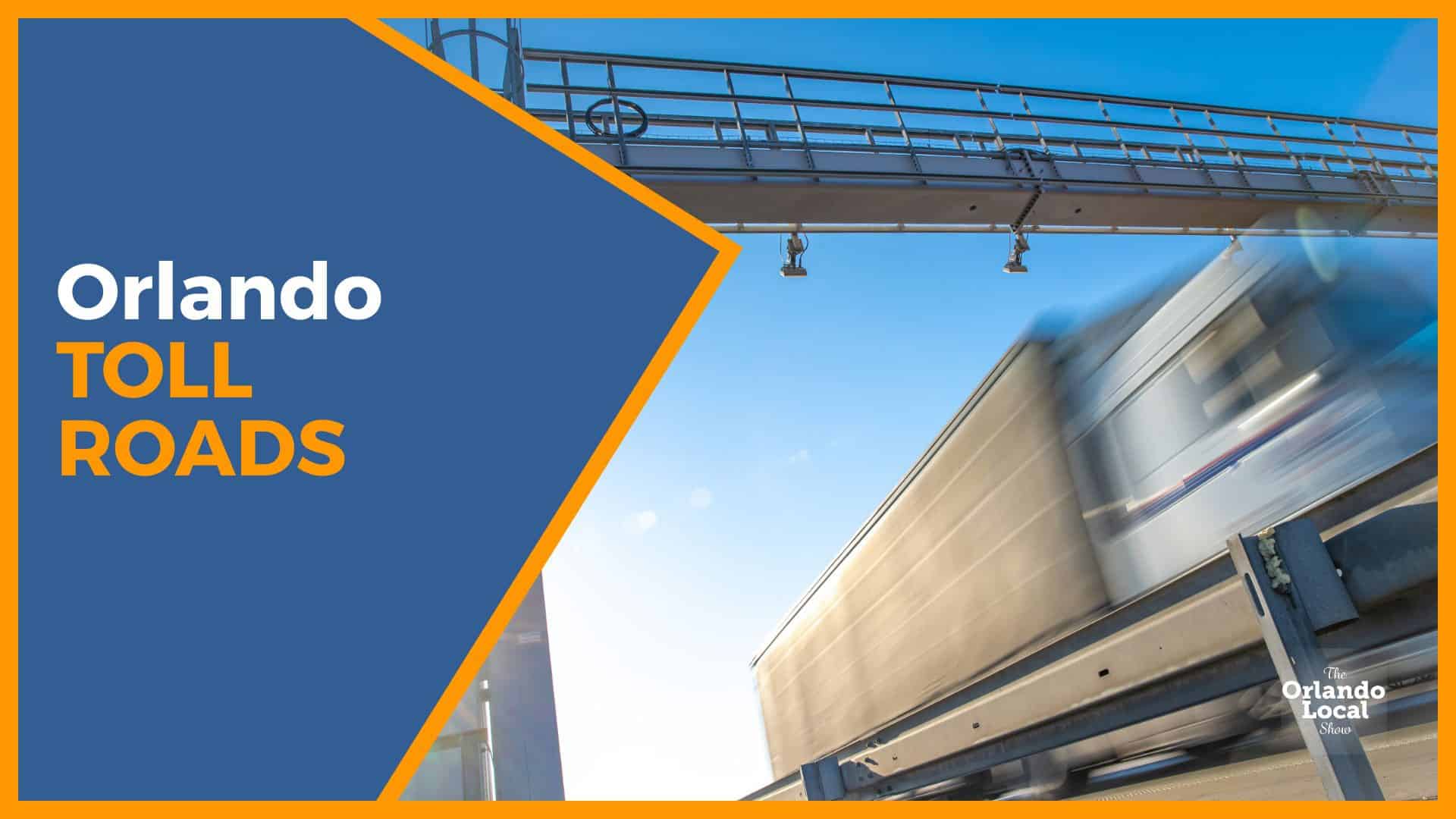
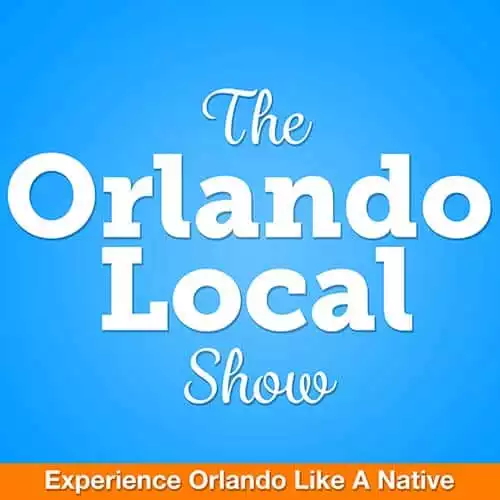
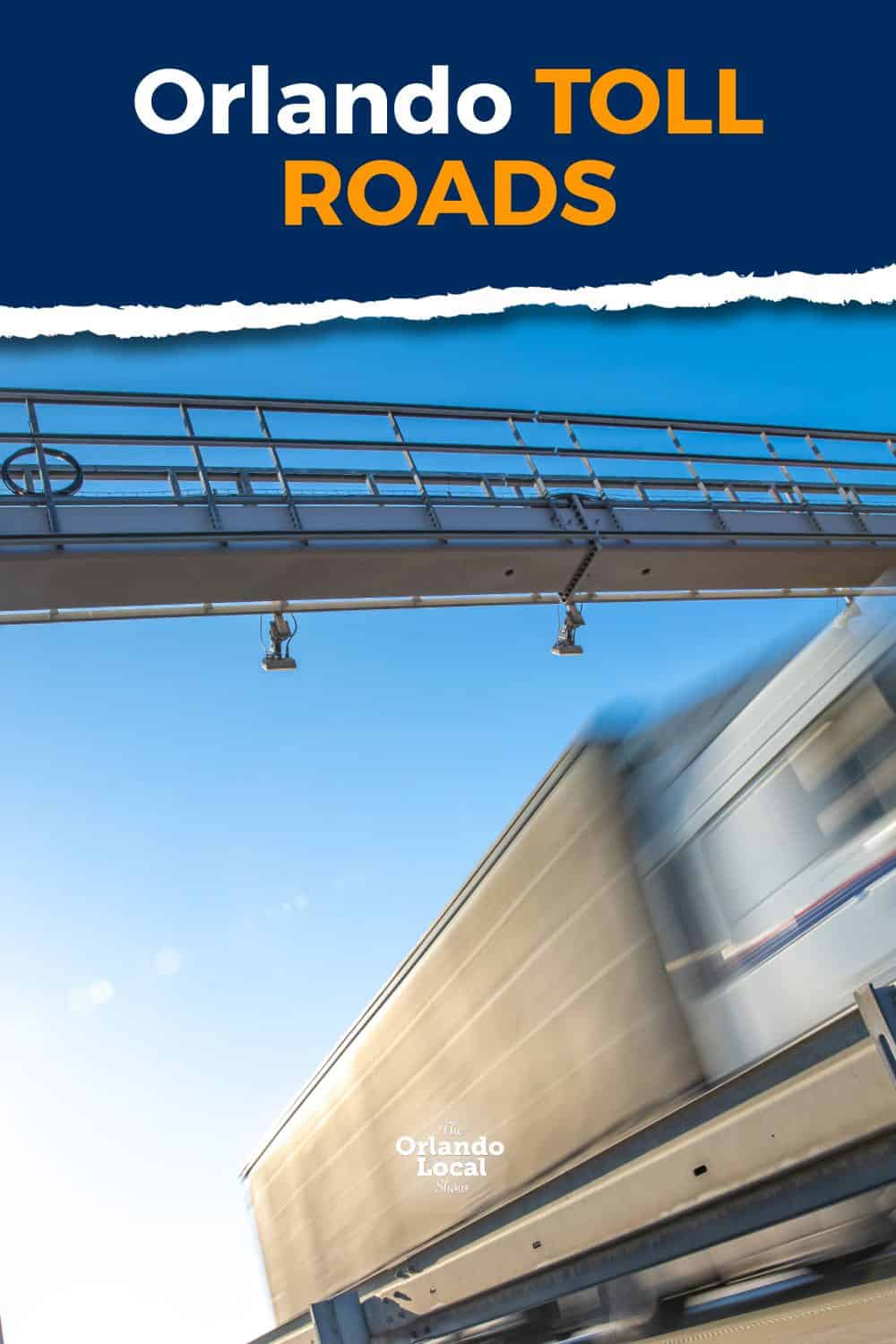

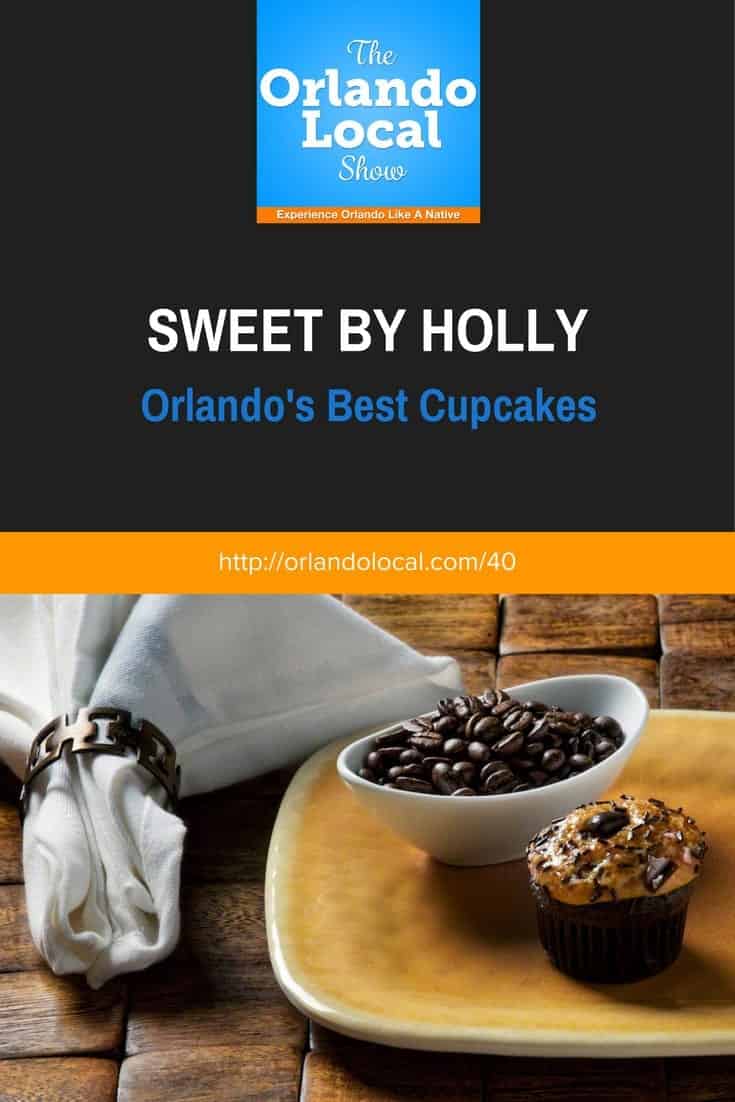
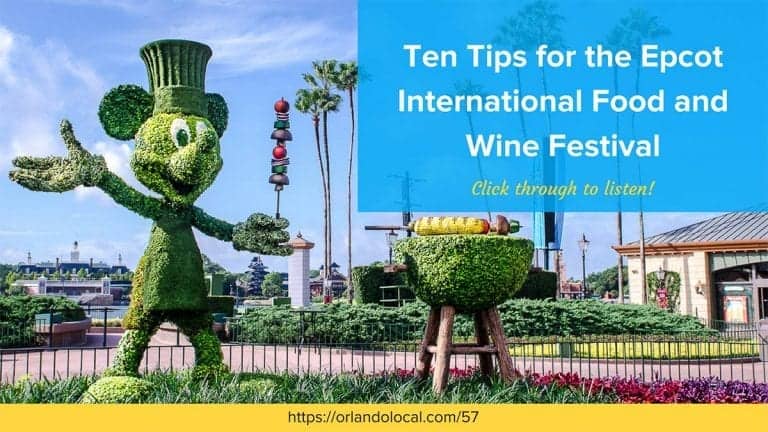

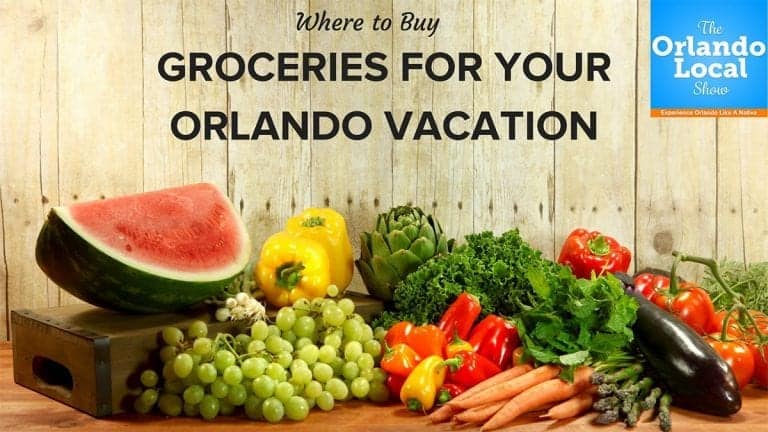
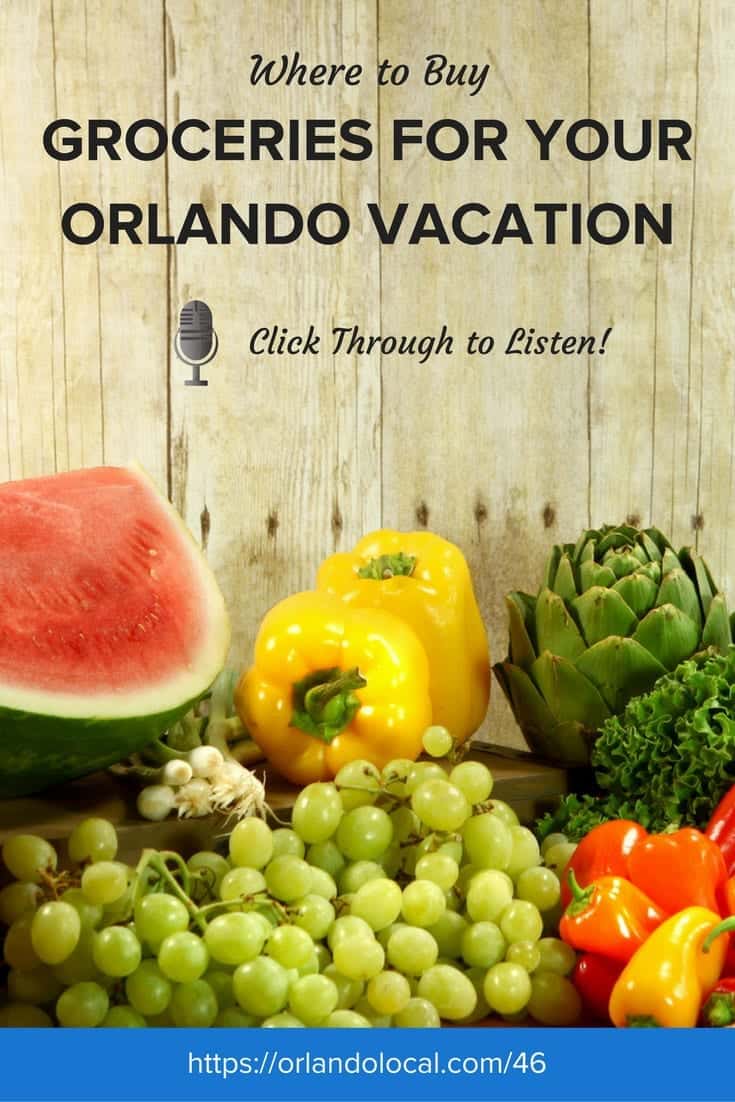
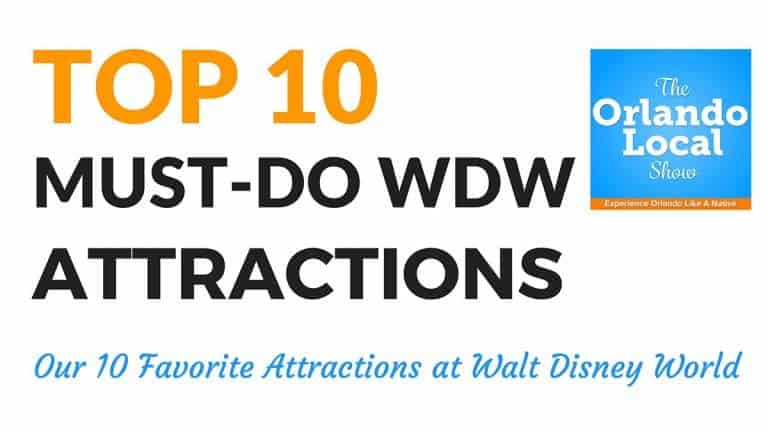
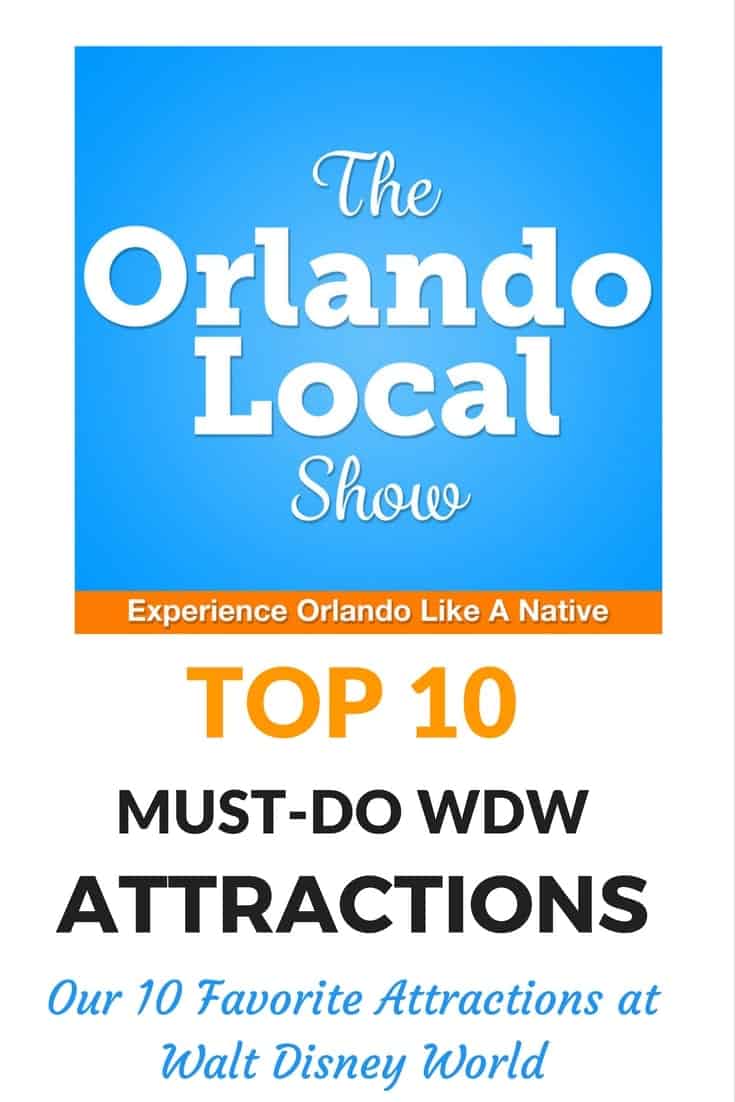
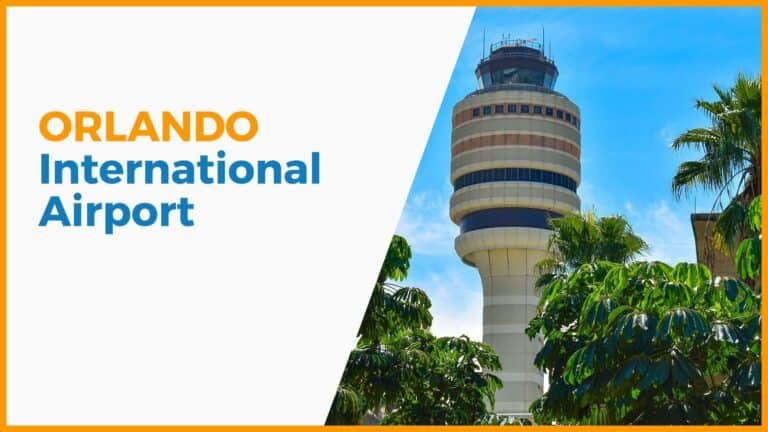
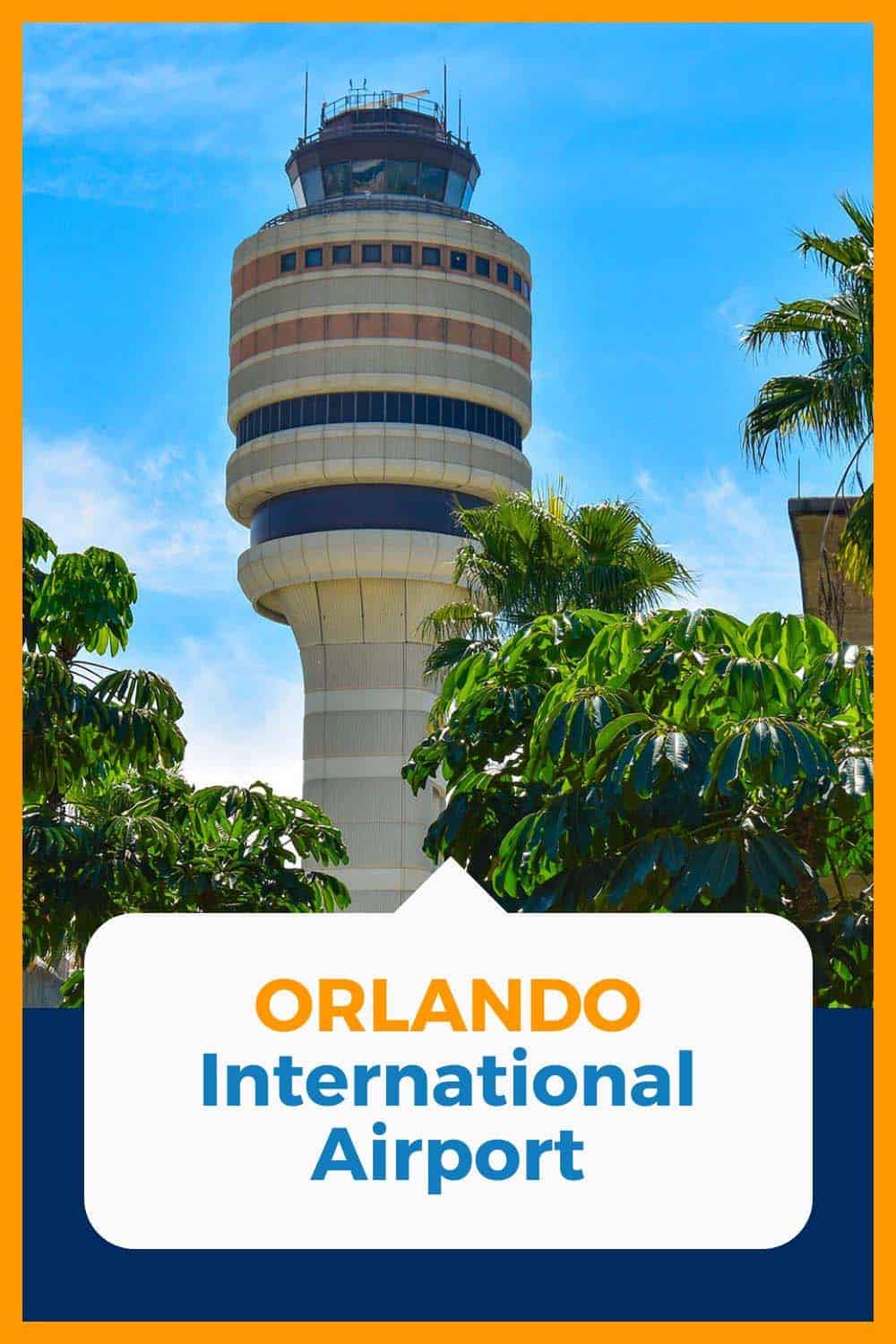


For visitors who are flying into Orlando International Airport, the best alternative is a Visitor Toll Pass.
https://visitortollpass.com/
Toll roads are one of many reasons why my family avoids Orlando. It’s stupid to pay for a public good, that is open to everyone most everywhere else in the US. Yes, there is the NJ Turnpike and a few other toll roads in the country, but Florida is the leader in gauging people.